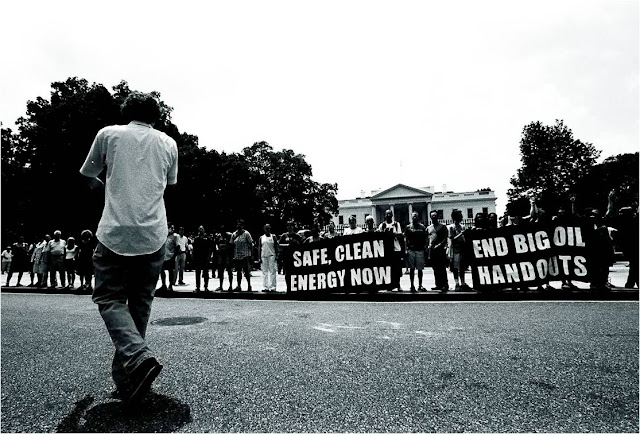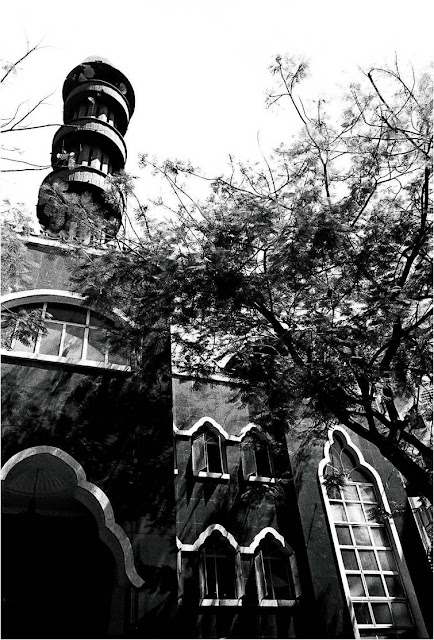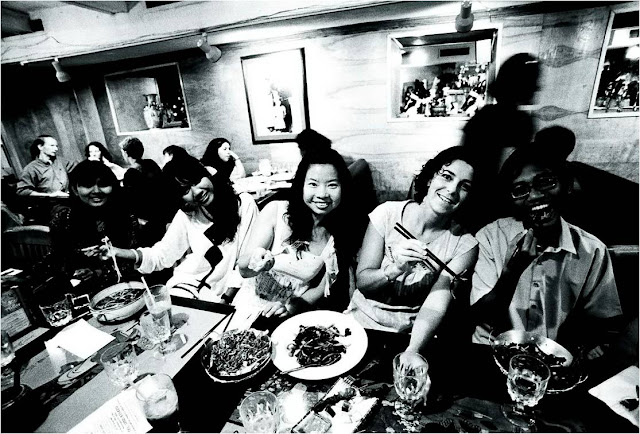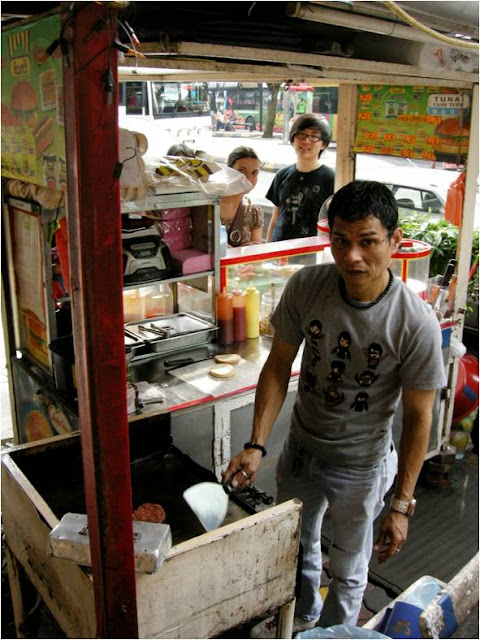So today is Federal Territories Day in Malaysia. Usually the first thing that comes to mind when one thinks of Wilayah Persekutuan is Kuala Lumpur. But there's also Labuan and Putrajaya.
As I was thinking about it yesterday, I realise I for one don't make a big fuss of this 'celebration', in spite of being a K.L. boy through and through. While driving to school this morning I considered my experience in Washington, D.C., last year and it occurred to me that Washington is very much like Kuala Lumpur in that both capitals are situated, not in states, but in specially appointed territories.
D.C. felt very much like K.L., from the sweltering summer heat and humidity (in contrast to Honolulu's cool, dry and sunny climate) to the gritty 'city' feel. The biggest difference between the two capitals appeared to me not to be the people, the culture, or even the currency, but the town planning. The streets and buildings in D.C. are arranged in a gridlike fashion, while K.L. landscape has a rather unruly, sprawling feel.
Today I shall consider some of the experiences I had in D.C. that reminded me of home, and this shall suffice as a short reflection on Federal Territories Day this year.
We were fortunate enough to be able to catch a 'street protest' while in D.C. It was our last day there, and the gathering was organised by the Hands Across the Sand movement to protest our excessive reliance on petroleum.
But while it was an interesting experience, in front of the White House no less, it didn't come close to matching the power of our local street protests in recent years. Whether either government was listening or not, I don't know. But the K.L. protests felt somewhat more focused, and there was a fervency amongst the protesters that clearly permeated the air.
Some of the churches in D.C. are really magnificent, made of brick that is that the brick we know today, brick from whichever age in the past that makes it look like the brick of Arthurian legend. There was an impressive church near the Hotel Palomar where we were based, but for some reason I don't think I photographed it.
In K.L., we have magnificent churches too. But we have something D.C. does not: equally, if not more so, magnificent mosques, like Masjid India along (where else?) Jalan Masjid India.
A lot of these old places of worship were built during colonial times, and their architecture reflect that of the colonial powers' own countries, as well as their colonies the world over. And so we see such elements as Indian Mughal motifs as well as traditional Western European designs, sometimes alone and sometimes in fusion, in structures like Masjid Jamek and St Mary's Cathedral.
I sometimes wonder what would happen, architecturally, if an Asian superpower were to colonise a European nation.
And then there was the food. Having been denied of proper Malaysian food for four weeks, we decided to give the Lonely Planet-recommended Malaysia Kopitiam a try. It turned out to be one of the best gastronomic decisions while we were in the States. Run by Larry and Penny, an Ipoh couple, the food is so good I had to concede that some of their dishes are 'even better than the real thing'.
But then the 'real thing' often lies as much in the experience as in the taste itself. For what hot dog vendor can match the incomparable Ramly Burger Man, the hope of hungry schoolchildren? I still think there are few experiences quite as surreal as Ramly burgers and beer!
Sometimes you don't discover your own city until you bring a visitor around. So it was that while we were prowling Brickfields with SooT's friend Paola at the end of last year, that we discovered this tau fu fah seller who used metal bowls and spoons, harmonising with the Indian community in the area.
I love tau fu fah. I never thought it would ever happen, but many mornings in my very final semester were spent at the SS2 market, hoping for crabs but always assured of a bowl of steaming hot bean curd. It was at that time so much of a staple that in some ways it became a ritual of sorts.
Finally there are the streets. I think the streets of a city really are its soul; from the feel of the pavement beneath your shoes or slippers, to the way buildings grow up from the sidewalk as if they were trees taking root by a river, from the chatter of passers-by, to the words on posters and billboards, from the buskers to whom the street is an endless stage, to the motorists who staunchly believe that a street can never be too wide.
The corner of Queen's and Kapiolani. Waialae Avenue. The history of a city, of a state, of a country weaved into the names of its streets.
M Street, P Street. Corner of N and 3rd. So well-organised, so geometrical and mathematical; an apt reflection of the 'motherboard of the motherland'.
And then there are the streets named after significant buildings on those streets. Jalan Masjid Jamek, Jalan Gereja.
'In the sidestreets and the alleyway', to use a U2 quote, the heart of the city beats on and on, as it did in the beginning before it became a city, as it will to the ends of time long after it ceases to be.
* * *
All black-and-whites shot on Tri-X 400.
K.L. protest shot on expired Fuji X-Tra 400 courtesy of Alissa.
Ramly burger and tau fu fah shot on digital.
Masjid Jamek alleyway shot on Fujichrome Astia 100.









1 comment:
ramly burger and beer! by the river lagi!
Post a Comment